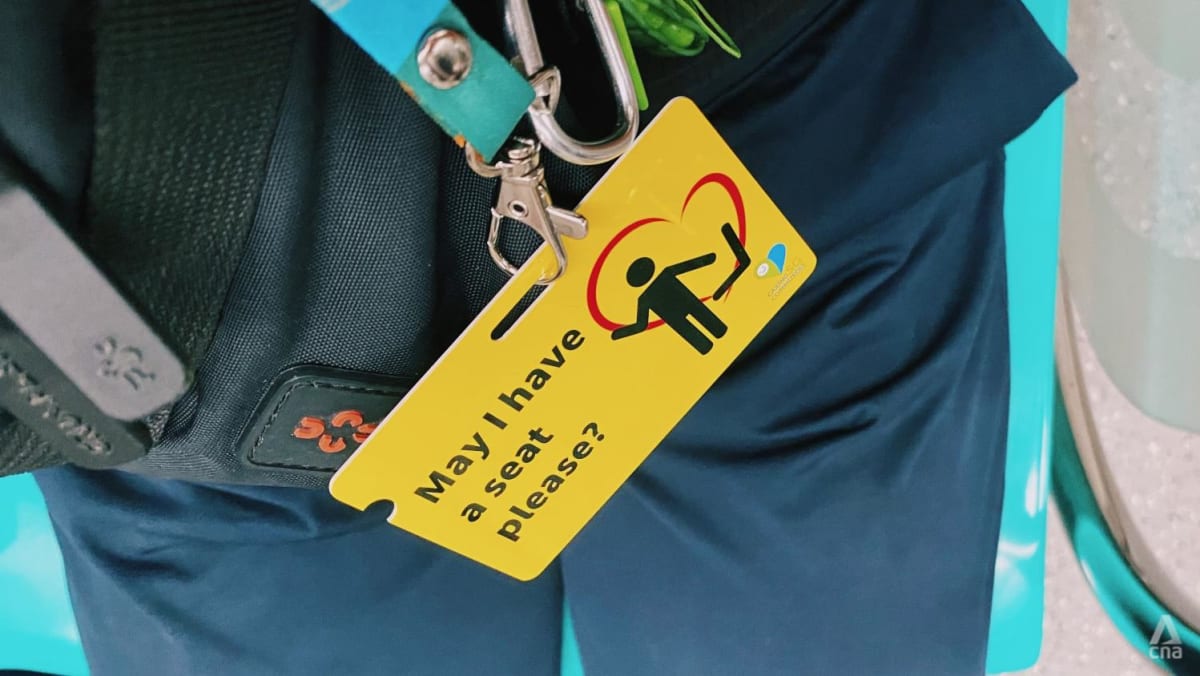
NO SEATS FOR ME
The moment I boarded the train at Tiong Bahru station, I received several stares from commuters.
Two seated commuters glanced at my “May I have a seat please?” card multiple times with a puzzled look, as though unsure whether it was legitimate or whether to vacate their seats. Many others were less obvious, occasionally peering out from behind their phones to see if I had gotten a seat yet.
When a seat was freed up about two stops later, an elderly, seated commuter darted his eyes in the direction of the seat, indicating that I should grab it. But that seat was quickly snapped up by another commuter. A few other commuters who witnessed this avoided my gaze when I looked their way.
Eventually, the carriage emptied out at Raffles Place MRT station and I took a seat. I then alighted at Bugis to transfer to the Downtown Line.
On that train, I immediately got a seat – even though I couldn’t be sure it was explicitly offered to me. I had entered the carriage with a woman pushing a wheelchair user, and the commuter in the reserved seat stood up when he saw us.
Later, I transferred to the Circle Line and North-East Line. At one point, I stood next to an elderly commuter who also had a trolley with her.
One commuter noticed that the two of us “needed” a seat and immediately offered hers to the elderly woman.
I then boarded a few relatively crowded buses around the Dakota and City Hall areas, hoping to be offered a seat. It was not to be, and I only got to sit when commuters alighted.
To be fair, a one-day experiment is not representative of Singapore commuters.
I, too, had not asked for a seat; having reasoned that the point of the initiative was that one shouldn't have to ask - the message on the card was obvious enough, even if in English only.
Plus, many commuters in Singapore are gracious: They help the visually impaired by warning them of the platform gap, or holding their arms as they step off escalators. They often stand up to offer their seats to the elderly or pregnant women.
But these are noticeable conditions or disabilities: You can see a wheelchair or a cane. You can see someone’s old age. You can see a pregnant woman struggling to stand.
On the other hand, my yellow card indicated nothing about my condition or disability, only that I needed a seat - not that it meant I was entitled to one.
For the “May I have a seat please?” initiative to work, it requires more than commuters giving up their seat. It also needs commuters to give those with the lanyard or sticker the benefit of doubt.
Bagikan Berita Ini














0 Response to "All stares and no offers to sit: Travelling on public transport with a 'May I have a seat please?' lanyard - CNA"
Post a Comment